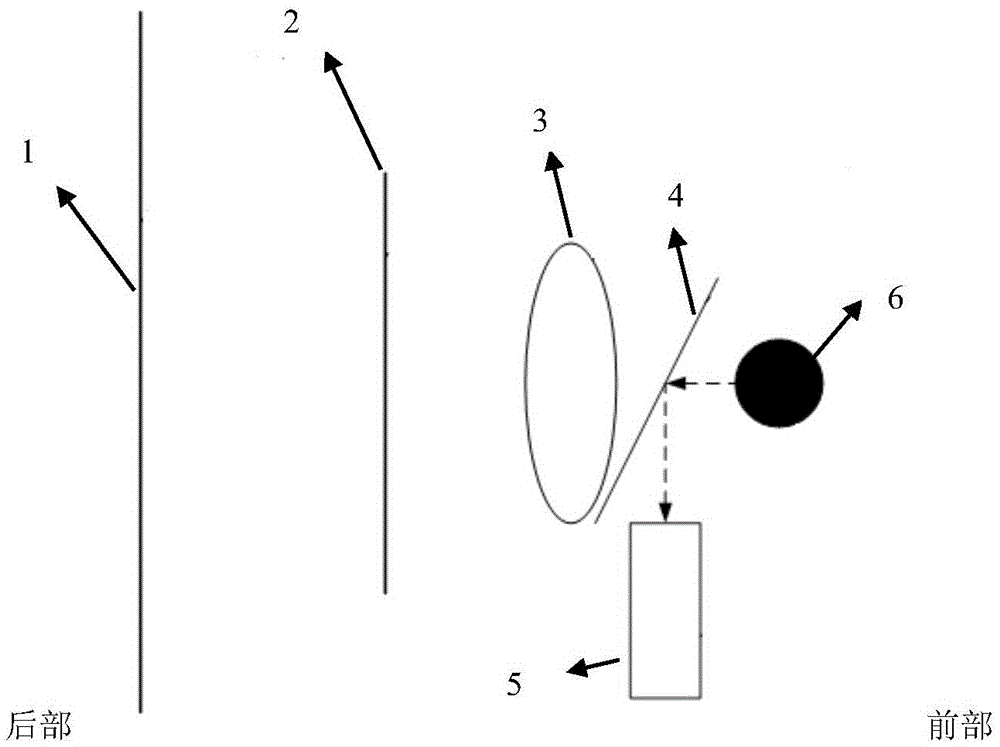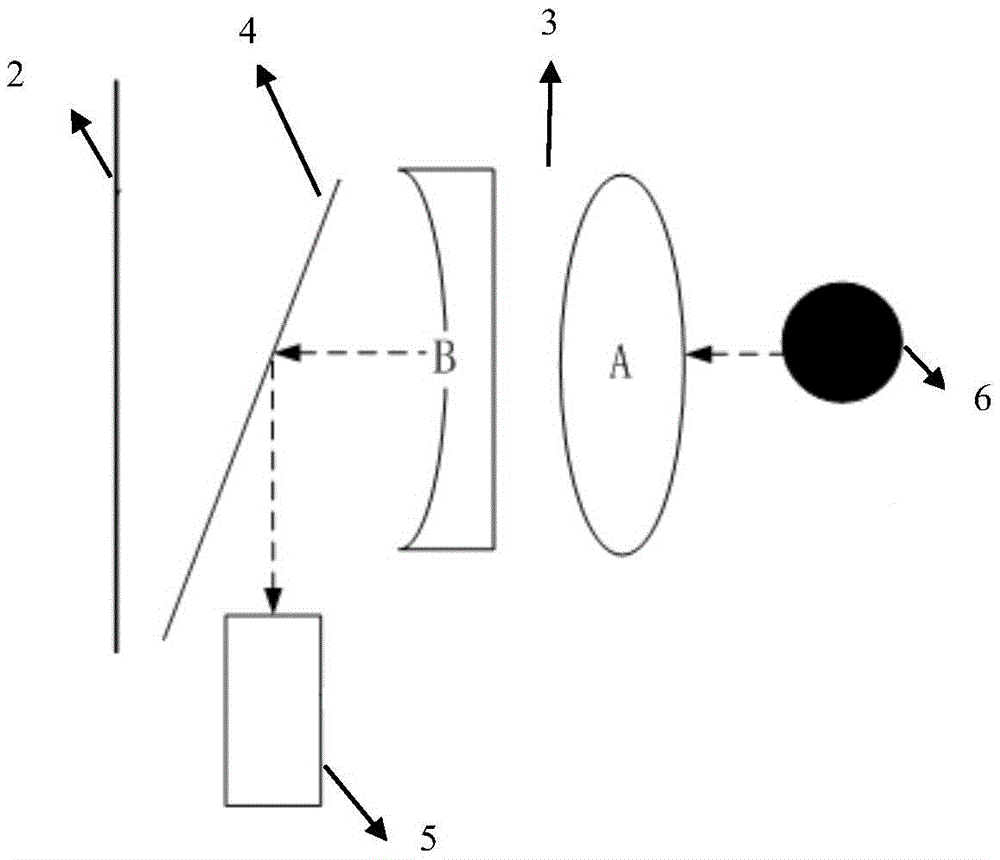Virtual eyepiece device for monitoring eyeball movement
An eyepiece and human eye technology, which is applied to eye testing equipment, applications, magnifying glasses, etc., can solve the problems of high testing environment requirements, many interference factors, and high proportion of subjective factors in testing results, and achieves a convenient and comfortable solution. desired effect
- Summary
- Abstract
- Description
- Claims
- Application Information
AI Technical Summary
Problems solved by technology
Method used
Image
Examples
Embodiment 1
[0023] figure 1 It is a schematic structural diagram of a virtual imaging eyepiece device according to an embodiment of the present invention, such as figure 1 As shown, the inside of the eyepiece device is provided with a lens assembly 3, a human eye test area, a microdisplay 2, a camera assembly 5 and a data transmission assembly, wherein the lens assembly is composed of two lens groups arranged on the left and right, and the microdisplay is located in the lens assembly. At the rear of the lens assembly, there are two human eye test areas on the left and right correspondingly. The camera assembly includes two camera assemblies, and the two camera assemblies are respectively facing the two human eye test areas. Components are connected to the controller for data transfer.
[0024] The lens group consists of two aspheric mirrors, one of which is a convex mirror with a diameter range of 20-40mm and a central thickness of 10-18mm; the other is a concave mirror with a diameter o...
Embodiment 2
[0028] figure 2 It is a structural schematic diagram of a virtual imaging eyepiece device according to another embodiment of the present invention. The difference between it and Embodiment 1 is that the two camera assemblies of the camera assembly are respectively located at the rear of the two lens groups correspondingly; There is a reflective lens with an angle of 36° with the horizontal direction, which is used for the camera component to record the image of the eyeball. The center axis distance between the camera component and the lens group is 23-27mm, and the horizontal distance between the camera component and the lens group is 16mm-20mm. Such a design provides a large viewing angle and a reduced thickness, improving wearing comfort. However, there is a problem that a specific optical design is required to correct image distortion, and the optical design is complicated.
PUM
 Login to View More
Login to View More Abstract
Description
Claims
Application Information
 Login to View More
Login to View More - R&D
- Intellectual Property
- Life Sciences
- Materials
- Tech Scout
- Unparalleled Data Quality
- Higher Quality Content
- 60% Fewer Hallucinations
Browse by: Latest US Patents, China's latest patents, Technical Efficacy Thesaurus, Application Domain, Technology Topic, Popular Technical Reports.
© 2025 PatSnap. All rights reserved.Legal|Privacy policy|Modern Slavery Act Transparency Statement|Sitemap|About US| Contact US: help@patsnap.com


